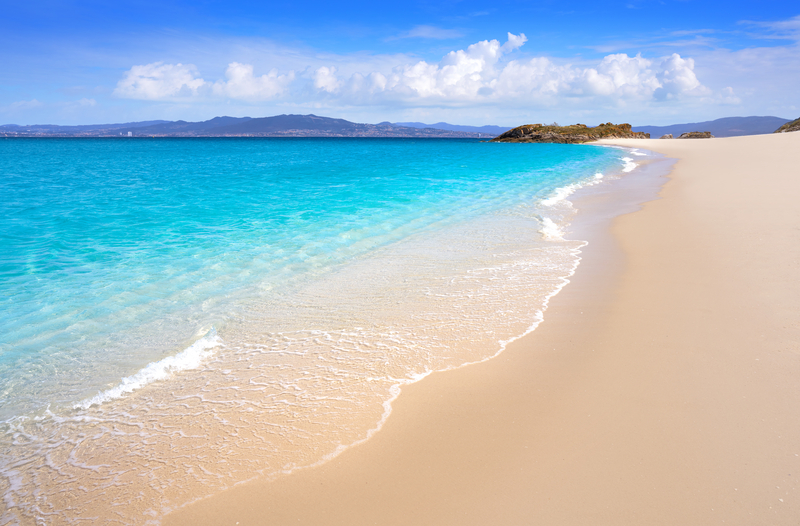
Each year, The World’s 50 Best Beaches selects a careful selection of the best beaches worldwide. This process takes into account both the opinions of tourism experts and a set of specific criteria that evaluate the overall experience of a visit. These criteria include, among others, the natural state of the site, its environment, the ecosystem, and the climatic conditions throughout the year. In 2025, eight European beaches were selected among the world’s 50 best beaches, including a Spanish beach that ranks 18th. This beach was chosen as an idyllic natural paradise and is also included in our selection of the most beautiful beaches in Spain. Although it is not the only natural beauty in the country, it attracts numerous visitors, including an elegant 50-meter-high waterfall that houses an enchanting legend of nymphs and lovers.
Back to this award-winning destination: The fine white sand, turquoise waters, and more than 700 meters of beachfront make this a near-essential coastal destination for anyone seeking a Caribbean postcard idyll on Spanish soil. The only difference? The water temperature, which rarely exceeds 17ºC in summer.
Playa de Rodas is the only Spanish beach to make it onto the list of the 50 most beautiful beaches in the world. But that’s not the only accolade this natural refuge has received; in 2007, the British newspaper The Guardian named it “the best beach in the world.” The crescent-shaped beach stretches over 700 meters and is located in the heart of the Cíes Islands on the coast of Galicia, surrounded by the famous Dos Nenos Lake, which connects the island of Monteagudo to the lighthouse island.
The reasons to praise this destination are so diverse that no traveler who has visited it can doubt its exceptional nature. In addition to the miles of fine white sand beaches and refreshing turquoise waters, the surrounding pine forests and dunes add further value to the beach. Furthermore, the marine biodiversity surrounding the islands forms one of the richest ecosystems on the Galician coast, allowing visitors to observe sea turtles, dolphins, and even whales.
The first written records of the Cíes Islands come from the Greek historian and geographer Herodotus. Other ancient authors referred to these formations as the “Islands of the Gods,” and considering their impressive landscapes, it’s easy to see why. This archipelago consists of three islands: Monteagudo (North Island), Faro (Central Island), and San Martín (South Island). The first two islands, connected by Rodas Beach, are particularly interesting.
These three islands have been designated natural parks since 1980 and are part of the Galicia Atlantic Islands National Park, established in 2002. Visiting the Cíes Islands requires prior authorization, which can be requested up to 90 days in advance. The only way to reach the Cíes Islands is by regular sea service from Vigo, Cangas, and Baiona. The third island in the archipelago, San Martín, or the South Island, is an exception, as it can only be reached by private boat.



